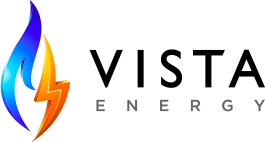Hydrocarbon liquids have many uses
Hydrocarbon gases (HGLs) are various products used in the end zone: residential, commercial, industrial (manufacturing and agriculture), transport, and electric power- Conroe Energy Plans . The chemical composition of HGL hygiene products (stream HGL contains at least 90% of the same type of HGL) is similar, but their uses are different.

Propane is used to make fuel and produce chemicals:
Most of the propane consumed in the United States is used as a fuel, often in areas where natural gas is limited or unavailable. This consumption is very seasonal, with the greatest consumption occurring during the fall and winter months. Propane as a fuel for the consumer market is usually defined as HD-5, which contains at least 90% propane by volume, with small amounts of other hydrocarbon gases.
Propane has two general market types: consumer (primarily as fuel) and non-consumer (which is for non-fuel or food use). Propane has four main uses:
- At home, for space heating and hot water; cooking; drying clothes; and providing gas heaters, barbecues, and emergency electricity.
- On the farm, heat barns and greenhouses, heat crops, control pests and weeds, and support farm equipment and water pumps. In business and industry, with power forklifts, electric welders, and other tools.
As fuel for on-road vehicles such as cars, school buses, or delivery vehicles and off-road vehicles such as tractors and lawnmowers. A non-commercial market for propane is the petrochemical industry. The primary use of propane in the petrochemical industry is as feedstock, along with ethane and naphtha, in petrochemical crackers to produce ethylene, propylene, and other olefins. Propane can also be used as a dedicated feedstock in petrochemical plants for the production of propylene for certain purposes. Propylene and other olefins can be made into a variety of products, especially plastics and resins, as well as glues, solvents, and coatings.
Ethane is used to produce ethylene, plastic items:
Ethane is often used to produce ethylene, which is used by the petrochemical industry to produce a variety of intermediates, many of which are used to make plastics. Ethane consumption in the United States has increased in recent years due to its growth and low cost compared to other fossil fuels such as propane and naphtha. Ethane can also be used directly as a fuel for electricity production, alone or in combination with gas.
Ethane supply and demand will be closely related because the demand for ethane is almost entirely in the petrochemical sector and because this product is difficult to transport by any other means than in a dedicated pipeline. The presence of ethane in dry gas raises its calorific value – calculated in British thermal units (Btu) per standard cubic foot of gas (Btu/SCF). Above the calorific value of methane (CH4), which is about 1010 Btu / SCF. Much of the additional heat generated by pipeline gas above the 1010 Btu/SCF level usually comes from the ethane contained in the natural gas transported by the pipeline.
Butanes: common butane and isobutane are used as blends for gasoline
Although some natural butane is used as fuel, most of it is mixed with gasoline, especially in the winter. Since the demand for isobutane exceeds the supply, normal butane is also converted to isobutane through isomerization. Normal butane can also be used as a raw material in the petrochemical industry. When natural butane is used in petrochemical cracking, the process produces (among other chemicals) butadiene, which is a precursor to synthetic rubber. Isobutane, whether it comes from natural gas, refineries, or isomerized from normal butane, is used to produce alkylates, which increase the octane in gasoline and control the change of gasoline. Pure isobutane can also be used as a refrigerant.
